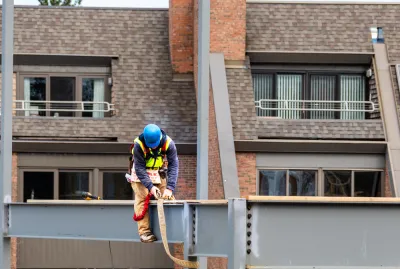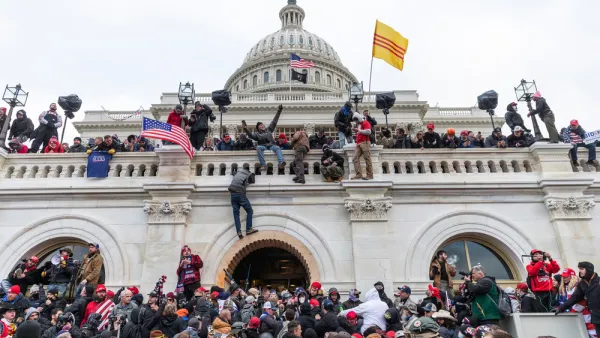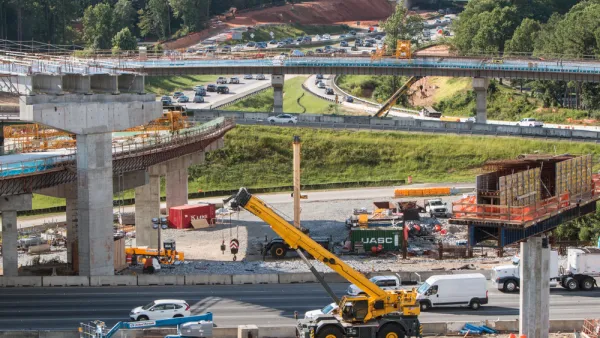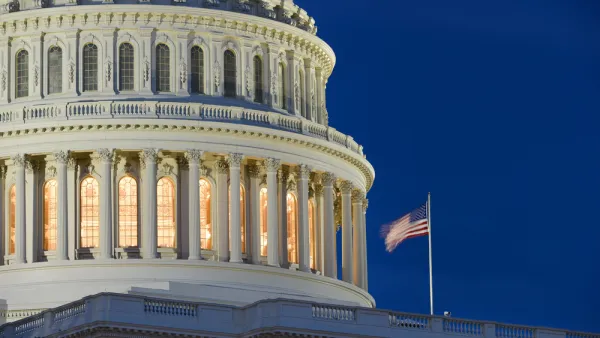The potential of the Infrastructure Investment and Jobs Act is most unrealized as the federal government mobilizes the details of the $1.2 trillion bill. President Joe Biden signed the bill in November 2021.

Writing for Route Fifty, Kery Murakami checks in with the Infrastructure Investment and Jobs Act (IIJA), a year after the historic $1.2 trillion bill was approved by Congress and signed into law by President Joe Biden. On one hand, reports Kurakami, local officials tout the bill’s potential to improve long-neglected infrastructure around the country. On the other hand, “changes are needed to help with the rollout of all the new funding, including speeding up permitting for transportation projects and making it simpler for local governments to apply for the grants,” writes Murakami.
The article digs specifically into some of the specific details of permitting requirements, especially under the National Environmental Policy Act (NEPA). The IIJA made tangible changes to the NEPA process, including a requirement for “federal agencies to consider the ‘indirect’ and ‘cumulative’ environmental effects of projects and not just the direct ones.” Republicans will try to undo those changes, reports Murkami. The IIJA also added the One Federal Decision, “which requires federal agencies to coordinate their environmental reviews.”
Sources cited in the article include U.S. Senator Ben Cardin (D-Maryland); U.S. Senator Kevin Cramer (R-North Dakota); Jim Willox, chairman of the Converse County Commission in Wyoming; Michael Carroll, deputy managing director of the Philadelphia Office of Transportation and Infrastructure Systems; and Jacob Day, mayor of Salisbury, Maryland.
While the article also mentions a few specific programs funded by the IIJA, like Buy America requirements, $5 billion to install electric vehicle charging infrastructure, and the Transportation Alternatives program (doubled by the IIJA), most of details of implementation remain conceptual, and have yet to materialize in tangible, built projects.
FULL STORY: The Infrastructure Law, One Year In

Analysis: Cybertruck Fatality Rate Far Exceeds That of Ford Pinto
The Tesla Cybertruck was recalled seven times last year.

National Parks Layoffs Will Cause Communities to Lose Billions
Thousands of essential park workers were laid off this week, just before the busy spring break season.

Retro-silient?: America’s First “Eco-burb,” The Woodlands Turns 50
A master-planned community north of Houston offers lessons on green infrastructure and resilient design, but falls short of its founder’s lofty affordability and walkability goals.

Test News Post 1
This is a summary

Analysis: Cybertruck Fatality Rate Far Exceeds That of Ford Pinto
The Tesla Cybertruck was recalled seven times last year.

Test News Headline 46
Test for the image on the front page.
Urban Design for Planners 1: Software Tools
This six-course series explores essential urban design concepts using open source software and equips planners with the tools they need to participate fully in the urban design process.
Planning for Universal Design
Learn the tools for implementing Universal Design in planning regulations.
EMC Planning Group, Inc.
Planetizen
Planetizen
Mpact (formerly Rail~Volution)
Great Falls Development Authority, Inc.
HUDs Office of Policy Development and Research
NYU Wagner Graduate School of Public Service




























